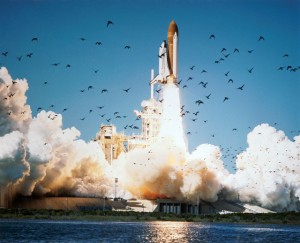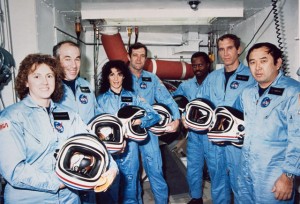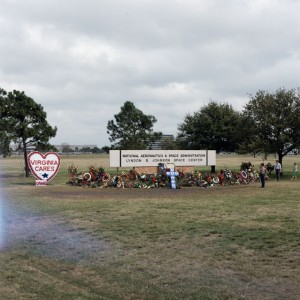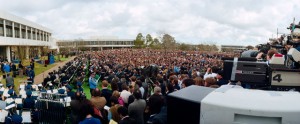By Jim Adamson, Location, Houston, TX

It was a bitter cold morning at Denver Stapleton airport as I did my preflight of the NASA T-38 that I had brought up to Colorado for some crew training for STS-61N. The wind blew a chill through me that I can only describe as haunting. One of those feelings that makes the hair stand up on the back of your neck.
I had shared dinner the night before with my first Platoon Sergeant, then retired Sergeant Major. He had asked me, “Are you guys that good, or are you just lucky?” I said, “A little of both.” We’d had 24 successful launches, and while we’d had some close calls, I was confident in our first rate team and our equipment. Still, the rocket riding business is a dangerous game.


Within minutes of completing my preflight I was warm and cozy in the cockpit humming along at flight level 410 headed back to Houston. As I crossed into Ft. Worth Center’s airspace I checked in and asked Center if they’d heard anything about the Shuttle Launch. The response was a rather obtuse deferral that I’d have to check with my Base Ops. While I thought that a little strange since the ATC guys always followed the Shuttle launches, I blew it off as a busy day for the controllers. Less than two hours after my take off from Stapleton I was rolling out on the runway at Ellington field in Houston. My Crew Chief dutifully awaited me as I rolled into the chalks and opened the canopy. My first words were “How’d the launch go?” His response: “The F#%$r blew up!”
It was January 28, 1986. I had just lost 7 dear friends and one of only 4 Shuttles in our fleet, The Challenger. Our luck had run out. The impact took a while to sink in.

What followed was nearly three years of painful rebuilding beginning with memorial services and ending with the second maiden launches of our remaining rebuilt Shuttles. The Rogers Commission was stood up to investigate and challenge every aspect of our design and operations. NASA responded with a revamped management structure and a tearing down and rebuilding of nearly every part of the Space Shuttle fleet and its operations. I, along with 10 other Astronauts, was assigned to management positions, most of us responding directly to the findings of the Rogers Commission. Dick Truly became NASA Administrator.

There were nine recommendations from the Commission that covered the waterfront of management re-structure, vehicle re-design, and procedural modifications. We worked incessantly to get our fleet back into space. I spent the first half of the reconstruction period in Shuttle Engineering Systems Integration and finished up leading a team to re-organize and re-staff the Processing Operations at the Kennedy Space Center. If there was ever a need for rapid Ops Planning this was it. We wrote and executed lots of them.
Those of us on the “inside” fully understood three important things. As hard as we might try, we could never make rocket flying safe, if we didn’t get back to flight quickly we might never get back, and finally, if we had another mishap in close proximity to Challenger the space exploration party would be over.
We finally did make it back to space and I am proud to have had the opportunity to represent the Class of 1969 on the second maiden launch of Columbia in 1989, and again on Atlantis in 1991. It took us another 19 years to lose another spacecraft and crew. About the same length of time as between the Apollo 204 fire, when we were Yearlings, and Challenger. 19 year spacing in that business isn’t really a bad track record.
Thanks so much for sharing your story, and more so, your career in America’s space program.